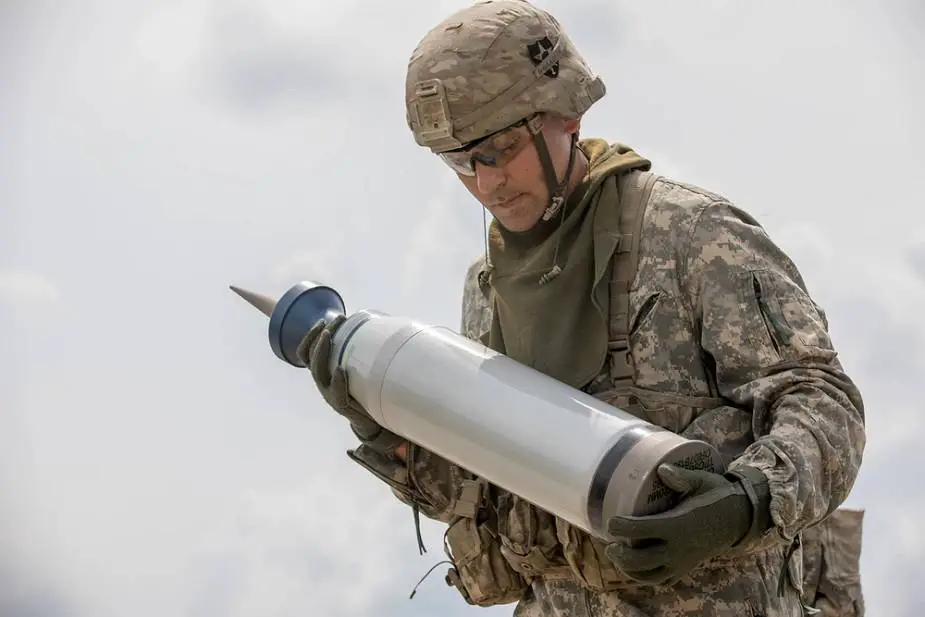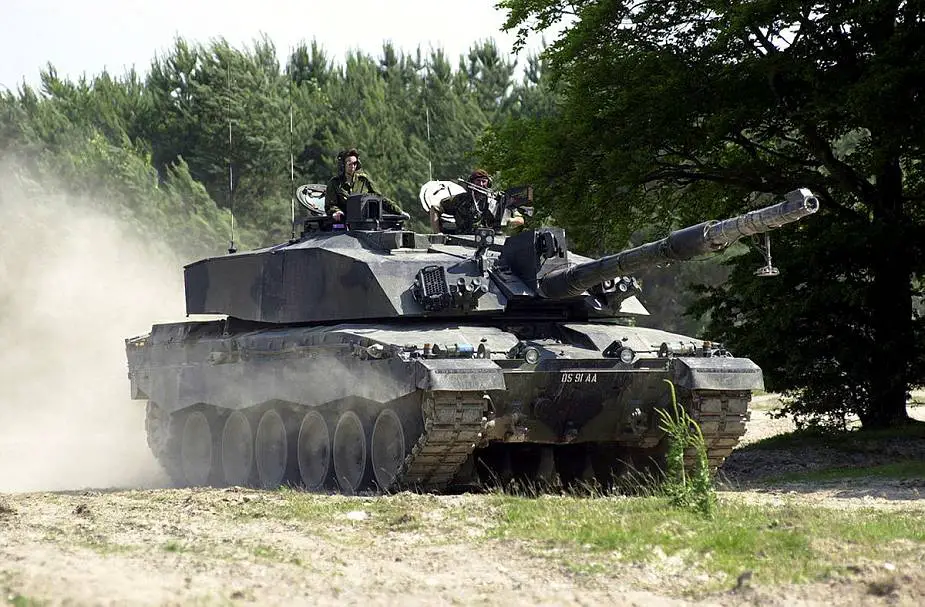On Monday, March 20, 2023, the British Department of Defense (DoD) confirmed that it would provide Ukrainian armed forces with depleted-uranium tank rounds. This type of ammunition is able to be fired by the Challenger 2 tanks that the British government will deliver to Ukraine. In this analysis, we describe how this type of ammunition works and its combat capabilities.
Follow Army Recognition on Google News at this link

Depleted uranium (DU) tank rounds are a type of armor-piercing ammunition used in tank warfare. These rounds are made from depleted uranium, which is a byproduct of the process used to enrich uranium for nuclear power and weapons. (Picture source Graphic News & Army Recognition)
Depleted uranium (DU) tank rounds are a type of armor-piercing ammunition used in tank warfare. These rounds are made from depleted uranium, which is a byproduct of the process used to enrich uranium for nuclear power and weapons. Depleted uranium is denser than lead, making it an ideal material for armor-piercing projectiles.
DU tank rounds are designed to penetrate heavily armored targets, such as tanks and other armored vehicles. When the DU round strikes its target, the kinetic energy from the impact causes the depleted uranium to self-sharpen and penetrate the armor. Upon penetration, the DU round can cause catastrophic damage to the interior of the target, including the ignition of any fuel or ammunition stored within, as well as killing or injuring the crew inside.
The use of DU tank rounds has been controversial due to the potential health and environmental risks associated with depleted uranium. When a DU round impacts a target, it can create fine dust of uranium particles, which can be toxic if inhaled or ingested. Additionally, depleted uranium is weakly radioactive, raising concerns about its long-term effects on human health and the environment. As a result, some countries have called for restrictions on the use of DU ammunition, while others continue to use it due to its effectiveness against heavily armored targets.
The Challenger 2 MBT (Main Battle Tank) that the British government will supply to Ukraine is equipped with a 120mm L30A1 rifled main gun, which is capable of firing a variety of rounds, including depleted uranium (DU) tank rounds. The British Army has used the CHARM 3 (CHallenger main ARMament) L27A1 armor-piercing fin-stabilized discarding sabot (APFSDS) round, which features a DU penetrator. The DU penetrator in the L27A1 round is designed to defeat heavily armored targets by leveraging the properties of depleted uranium, such as high density, self-sharpening, and pyrophoric effects.

A U.S. Army Master Gunner Student, assigned to 3rd Squadron, 16th Calvary Regiment, carries an M829A4 sabot tank round to load into the loader hatch on a M1A2 SEP V2 Abrams tank. The M829A4 is a fifth-generation APFSDS-T cartridge using a depleted-uranium penetrator with a three-petal composite sabot. (Picture source U.S. DoD)
Depleted uranium (DU) tank rounds have several advantages that make them an attractive choice for military use, particularly for engaging heavily armored targets. This type of ammunition is approximately 1.7 times denser than lead and 2.4 times denser than steel, making it an excellent material for armor-piercing projectiles. The high density allows DU rounds to maintain their shape and integrity even at high velocities, ensuring better penetration against thick armor. When a DU round impacts a target, it has a unique characteristic of self-sharpening rather than deforming or mushrooming like other materials. This behavior increases the effectiveness of the round in penetrating armor, as it maintains its sharp, pointed shape as it passes through the target.
DU tank rounds are typically fin-stabilized, meaning they have fins attached to the rear of the penetrator to maintain stability and accuracy in flight. This enables the round to travel at high velocities and hit targets with great precision. The sabot is a lightweight carrier that encases the penetrator during its travel through the barrel of the gun. After the round exits the barrel, the sabot is discarded, allowing the penetrator to continue on its trajectory unimpeded. This design helps maintain high velocity and accuracy.
DU tank rounds are compatible with a variety of modern main battle tank main guns, including the 120mm smoothbore guns used on the M1A1 Abrams and the 120mm rifled guns used on the British Challenger 2.

British army Challenger 2 MBT Main Battle Tank is able to fire depleted-uranium tank rounds. (Picture source British DoD)














